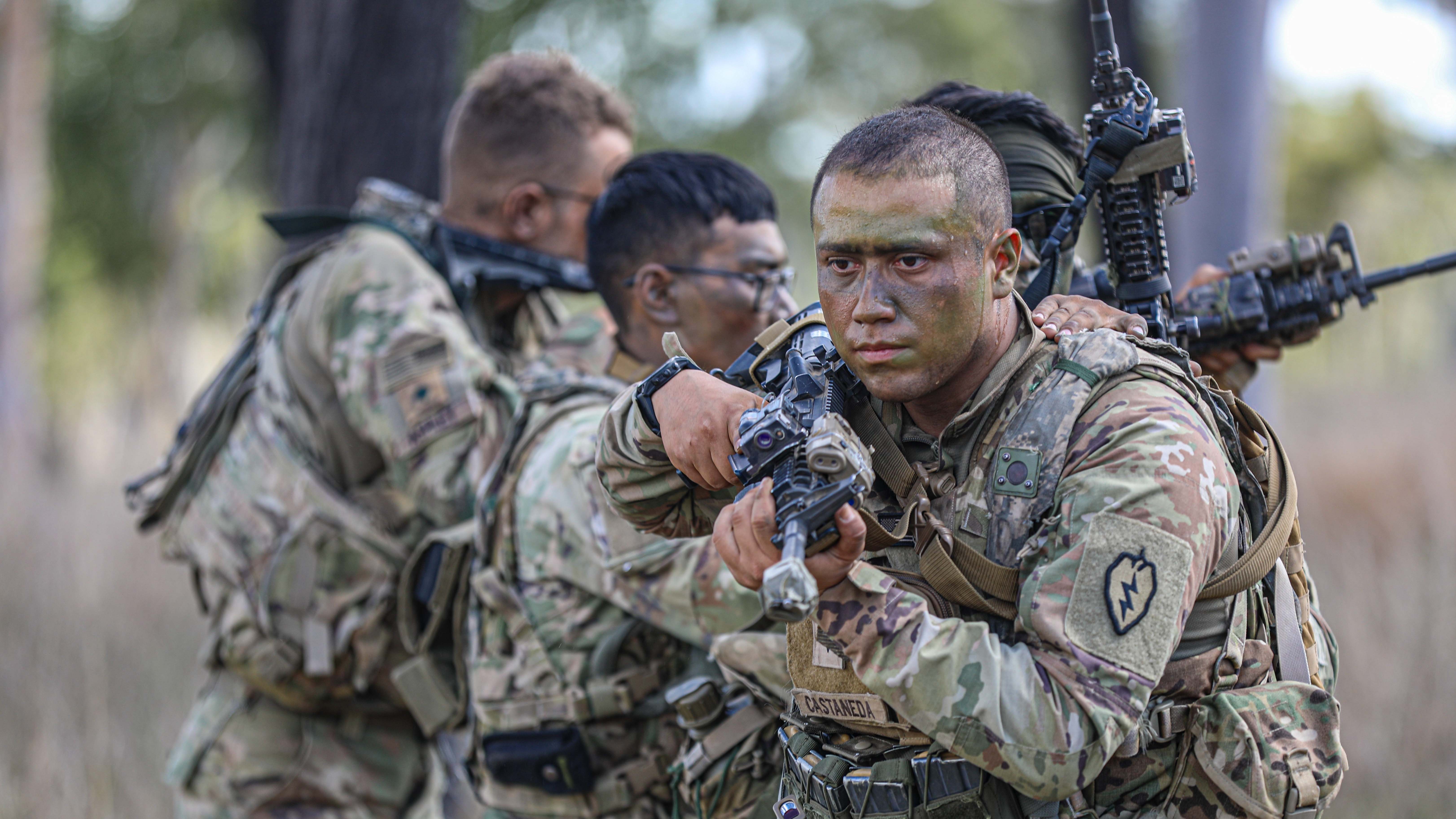Flynn Reinforces Army’s Indo-Pacific Role
Flynn Reinforces Army’s Indo-Pacific Role

More and more partners and allies in the Indo-Pacific are turning to the U.S. as they work to deter China’s “aggressive, irresponsible and insidious” behavior, the commander of U.S. Army Pacific said.
The Chinese are “conducting operations where they are violating the territorial integrity and the national sovereignty” of their neighbors in the region, and those neighbors are turning to their partner the U.S. Army, Gen. Charles Flynn said Oct. 12.
“Land is the prize, because if you control land, then you can control people,” Flynn said. “We’re seeing that today in Europe, and you’re seeing that right now in the Middle East.”
This is where armies have a key role, Flynn said. “What do armies do? They seize, hold and defend terrain, and the armies in this region are working to seize, hold and defend terrain, and they want to do that with their partner, the U.S. Army.”
Speaking as part of the Strategic Landpower Dialogue co-hosted by the Association of the U.S. Army and the Center for Strategic and International Studies, Flynn said the Indo-Pacific may often be viewed as an air or maritime theater, but it is a joint theater with “joint problems” and several nations where the army is their primary force.
“This region is really defined by the armies,” Flynn said. As examples, he said, 65% of the Japanese military is its army, 70% of the Philippine military is its army, and the army makes up 80% of India’s military.
“My point is, they turn to their armies to provide security for their people,” Flynn said, adding that “partnership with the U.S. Army is integral to that.”
For the U.S. Army, that means more exercises and engagements with its Indo-Pacific partners and allies. It also means a growing need to pay close attention to China, which leaders have called America’s “pacing challenge.”
“What they’ve done over the last 10 years and what they’re signaling and intending to do over the next 10 years should be concerning for all of us,” Flynn said. “And it’s definitely concerning for the region, which is why they’re showing up for all those exercises.”
Under Flynn’s leadership, the Army has built its presence in the Indo-Pacific through three primary efforts: the Joint Pacific Multinational Readiness Center, Operation Pathways and building joint interior lines.
The Joint Pacific Multinational Readiness Center is the first combat training center the Army has established in 50 years, and the first in the region. It has campuses in Hawaii and Alaska and a deployable element that allows the Army to bring the training into the region.
“The ability to bring forces to those locations and train at the division and below level, with enabling commands and joint assets, … gives us an advantage by remaining in the region and generating readiness,” Flynn said.
That readiness then flows into Operation Pathways, a series of exercises featuring American soldiers and their Indo-Pacific partners. There are more than 40 operations in the region, Flynn said. “It creates interoperability between our allies and partners and builds the confidence of our allies and partners in our relationship,” he said.
The third focus is on joint interior lines, or the ability to put combat-credible forces forward in the region with the ability to conduct command and control, protection, sustainment and collection, Flynn said. These joint interior lines create positional advantage, staying power and operational endurance for the joint force, he said.
A lot has changed in the Indo-Pacific, but geography has not. “You have to have command and control, sustainment, protection and collection forward first,” Flynn said. “If you put fires and maneuver out there first and you can’t sustain it, you can’t adequately command and control it, you can’t adequately protect it and you can’t adequately collect in order to inform it, then you’re wasting your capability.”
China has three things the U.S. does not, Flynn said. They are operating on interior lines—for example, they are just 100 miles from Taiwan—and they have mass and magazine depth. “We’re trying to counter those three things,” he said.
Flynn said he is excited about the gains the U.S. Army has made, particularly in increasing readiness and strengthening and expanding relationships in the region, “but there are still miles to march before we rest.”
China is on a “dangerous path,” Flynn said. “I worry less about what they’re doing, and I worry more about what we’re doing, and we have to get into position now,” he said.

